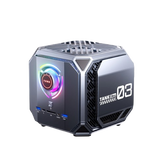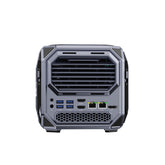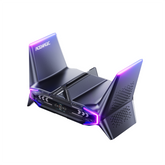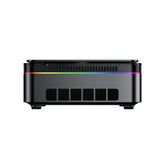How to Get Rid of Dust in Laptop: The Complete Cleaning Guide

Over time, dust naturally builds up inside your laptop — especially around the cooling fan, vents, and keyboard. This can lead to overheating, noisy fans, or even performance slowdowns. If you’ve been wondering why my laptop fan is so loud, dust could be the main culprit.
In this guide, we’ll walk you through how to clean your laptop safely and effectively, from the fan and keyboard to the screen, so your device stays cool and performs at its best.
Why Keeping Your Laptop Clean Is So Important
Keeping your laptop clean is crucial for several reasons:
- Better Performance: Dust and debris can clog the fans and vents, causing overheating and reduced performance.
- Longer Lifespan: Regular cleaning helps prevent hardware damage and extends the overall life of your device.
- Improved Hygiene: Keyboards and touchpads easily collect bacteria and germs, so cleaning them regularly is essential for your health.
- Professional Appearance: A spotless laptop looks more professional and feels more enjoyable to use.
Dust buildup can block air circulation and settle on sensitive components like the CPU and GPU. This forces your computer fan to work harder, increasing noise and wear over time. Keeping your laptop clean isn’t just about appearance — it’s about maintaining performance, longevity, and comfort.
Step 1: Power Down and Prepare
Before you start cleaning, follow these essential safety steps:
- Shut down your laptop completely.
- Unplug it from the charger and remove any connected peripherals.
- If possible, remove the battery (for models that allow it).
- Work in a clean, dry, and well-lit space.
Have these cleaning tools ready:
- Compressed air can
- Small, soft brush
- Microfiber cloth
- 70% isopropyl alcohol (optional)
Step 2: How to Clean Laptop Fan and Vents
If your fan is unusually loud, it’s likely clogged with dust. Here’s how to clean a computer fan safely:
- Locate the air vents on the bottom or sides of your laptop.
- Use short bursts of compressed air to blow out dust from the vents. Keep the nozzle 2–3 inches away.
- Gently hold the fan blades still with a toothpick or cotton swab while cleaning to avoid damage.
- Wipe the outer vent areas with a dry microfiber cloth.
Step 3:
Keyboards can trap dust, crumbs, and oils from everyday use. To clean yours properly:
- Turn the laptop upside down and gently tap the back to dislodge debris.
- Use compressed air or a brush to remove dust between keys.
- Wipe the surface with a slightly damp microfiber cloth.
- For deep cleaning, lightly dab isopropyl alcohol on a cotton swab and clean around each key.
Step 4: How to Clean Laptop Screen
Fingerprints, smudges, and dust can make your screen look dull. Here’s the best way to clean a laptop screen:
- Please turn off the screen and let it cool.
- Use a dry microfiber cloth to remove dust.
- If needed, spray a screen-safe cleaner onto the cloth (never directly on the screen).
- Wipe gently in circular motions for a streak-free finish.
Step 5: Keep Your Laptop Clean Longer
Once your laptop is spotless, keep it that way with these habits:
- Use it on hard, flat surfaces instead of beds or couches.
- Keep food and drinks away from your device.
- Store your laptop in a clean sleeve or bag when not in use.
- Clean every 2–3 months, or more often in dusty areas.
Final Thoughts
Learning how to clean your laptop and get rid of dust is a simple but powerful way to keep it running like new. Regular cleaning reduces fan noise, improves cooling, and helps your laptop last longer — all while maintaining a professional and hygienic workspace.
Your laptop works hard for you every day — show it a little care, and it’ll reward you with better performance and peace of mind.
FAQ
1. How often should I clean my laptop?
Ideally, you should clean your laptop every 2–3 months. If you use it in a dusty environment or on soft surfaces like a bed or couch, monthly cleaning is recommended.
2. Can I clean my laptop with water?
Avoid using plain water directly on your laptop. Instead, use a slightly damp microfiber cloth or a cleaner designed for electronics. Excess moisture can cause short circuits or damage components.
3. What should I do if my laptop gets wet?
Immediately power it off, unplug all cables, and remove the battery (if possible). Dry the surface, turn the laptop upside down, and let it air-dry for at least 24 hours. Do not use heat or a hairdryer. If the laptop doesn’t start afterward, seek professional repair.
4. Is it safe to clean a laptop while it’s on?
No. Always turn off and unplug your laptop before cleaning to avoid electrical damage or accidental input.
5. How do I fix sticky keys on my laptop?
Use compressed air or a soft brush to remove debris around the keys. Then lightly clean the area with a cotton swab dipped in isopropyl alcohol. For severe stickiness, the keycaps may need to be removed for deeper cleaning.
6. Should I clean the inside of my laptop?
Yes — but only if you’re comfortable doing so or have technical experience. Opening the case allows you to remove deep dust from the fan and heat sink, improving cooling and performance. If unsure, visit a repair shop for professional cleaning.
7. How can I clean my laptop without compressed air?
You can use a soft brush, rubber blower, or vacuum cleaner with a low setting to gently remove dust. Be careful not to create static electricity or blow air too forcefully.
8. Can cleaning my laptop improve performance?
Absolutely. Removing dust improves cooling efficiency, which helps prevent overheating and allows your CPU and GPU to run at full speed.
9. What should I avoid when cleaning a laptop?
Avoid using household cleaners, alcohol wipes, paper towels, or spraying liquids directly onto the device. Never insert sharp objects into vents or ports.
10. How do I know when my laptop needs cleaning?
Signs include a loud fan, overheating, slower performance, or visible dust around the vents and keyboard.








Leave a comment
Please note, comments need to be approved before they are published.